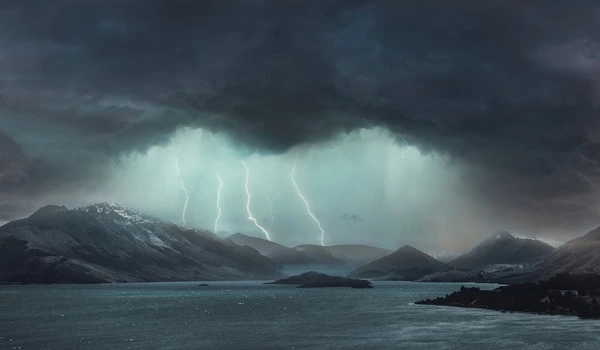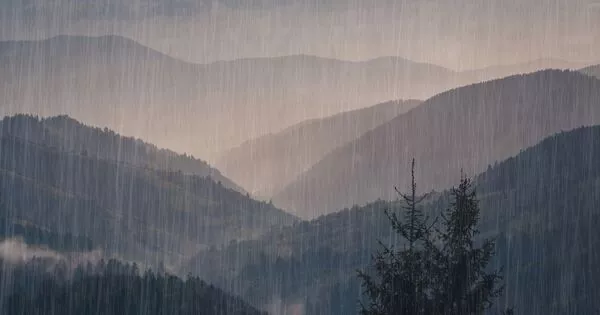Climate change has the potential to have a variety of effects on mountain regions, including increased vulnerability to extreme rainfall events. According to a new study, as global temperatures rise, mountains across the Northern Hemisphere will become hotspots for extreme rainfall events that could cause floods and landslides, potentially affecting a quarter of the world’s population.
Extreme weather events are becoming more common as the world warms, but they are also changing. Climate change is shifting snowfall to rainfall on mountains across the Northern Hemisphere, according to researchers at the Department of Energy’s Lawrence Berkeley National Laboratory (Berkeley Lab). These surges of liquid water bring with them a unique set of hazards, such as floods, landslides, and soil erosion.
“One-quarter of the global population lives in or downstream from mountainous regions,” said Mohammed Ombadi, first author of the paper published today in Nature. “They are going to be directly affected by this risk.”
Our findings revealed a linear relationship between the level of warming and the increase in extreme rainfall: for example, one degree of warming causes 15% more rain, while three degrees causes 45% more rain.
Mohammed Ombadi
Scientists already expect climate change to increase the volume of water falling during extreme events (which typically last a few hours to a day), but this is the first time researchers have looked at whether that extreme precipitation falls as rain or snow. They discovered that the fraction of water falling as snow decreased in mountainous regions, instead falling as rain, making mountains particularly vulnerable to extreme rain hazards. They even put a number to it: for every 1 degree Celsius increase in global temperature, researchers predict 15% more rain at high elevations.
“This increase in rainfall extremes is not only something that is going to happen from now until the end of the 21st century – we’re already seeing it,” Ombadi said. “That same rate was also evident in the data from 1950 to 2019. Rainfall extremes in mountains have already been increasing, and will continue to change with that 15% rate.”

While all mountain ranges in the Northern Hemisphere are experiencing a shift from snow to rain, the North American Pacific mountain ranges (the Cascades, Sierra Nevada, and coastal ranges from Canada to Southern California), the Himalayas, and high-latitude regions are the most vulnerable to extreme rainfall events. Researchers are still trying to figure out why those areas are more vulnerable than others, such as the Rockies or the Alps.
“We believe that the North American Pacific mountain ranges are more vulnerable to rainfall extremes than other mountain ranges because a significant portion of snowfall in this region typically occurs at temperatures just below zero degrees Celsius,” Ombadi explained. “The smallest change in air temperature will convert this snowfall to rain.” This is in contrast to other mountain ranges, where snowfall can occur at temperatures well below zero degrees.”
Ombadi hopes that other climate scientists will use the data to improve global climate models by distinguishing between snowfall and rainfall and that civil engineers and planners will use the data to better prepare for heavy rain events.
“We need to factor these results into how we design and build the infrastructure in these mountainous regions so that they can withstand the negative consequences of increases in rainfall extremes,” Ombadi said.
Meanwhile, countries are working to meet the Paris Agreement’s target of limiting global warming to less than 2 degrees Celsius above pre-industrial levels.
“Our findings revealed a linear relationship between the level of warming and the increase in extreme rainfall: for example, one degree of warming causes 15% more rain, while three degrees causes 45% more rain,” Ombadi said. “Many technologies are being developed that could help us reduce greenhouse gas emissions and the rate at which the planet warms.” This study, in my opinion, demonstrates the importance of investing in clean solutions and beginning to plan for the consequences of global warming now.”
















